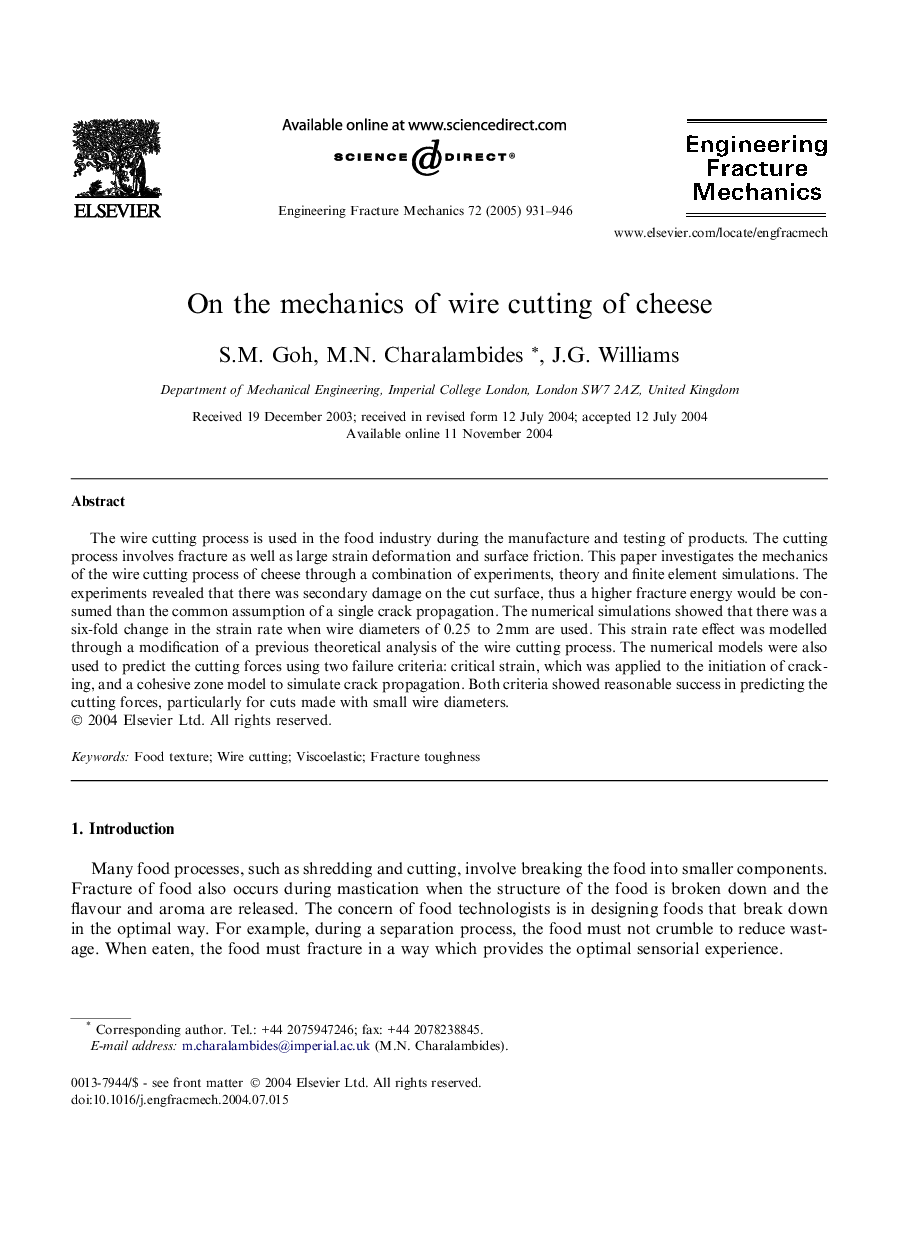| Article ID | Journal | Published Year | Pages | File Type |
|---|---|---|---|---|
| 10415614 | Engineering Fracture Mechanics | 2005 | 16 Pages |
Abstract
The wire cutting process is used in the food industry during the manufacture and testing of products. The cutting process involves fracture as well as large strain deformation and surface friction. This paper investigates the mechanics of the wire cutting process of cheese through a combination of experiments, theory and finite element simulations. The experiments revealed that there was secondary damage on the cut surface, thus a higher fracture energy would be consumed than the common assumption of a single crack propagation. The numerical simulations showed that there was a six-fold change in the strain rate when wire diameters of 0.25Â to 2Â mm are used. This strain rate effect was modelled through a modification of a previous theoretical analysis of the wire cutting process. The numerical models were also used to predict the cutting forces using two failure criteria: critical strain, which was applied to the initiation of cracking, and a cohesive zone model to simulate crack propagation. Both criteria showed reasonable success in predicting the cutting forces, particularly for cuts made with small wire diameters.
Related Topics
Physical Sciences and Engineering
Engineering
Mechanical Engineering
Authors
S.M. Goh, M.N. Charalambides, J.G. Williams,
